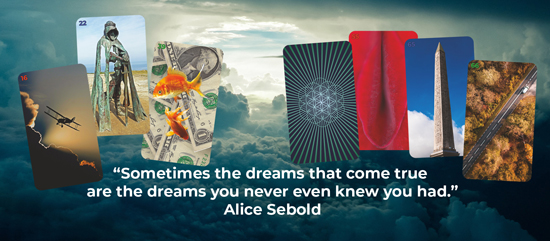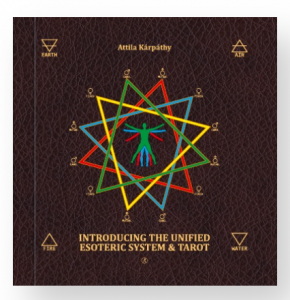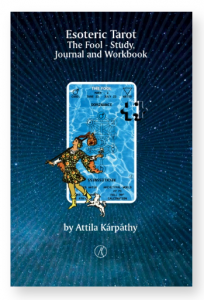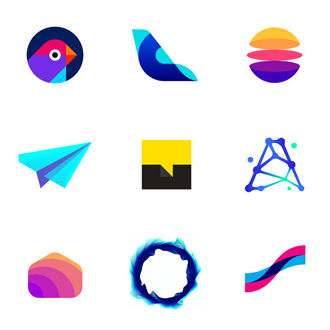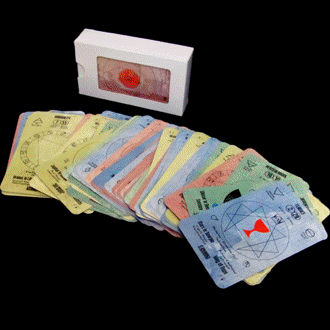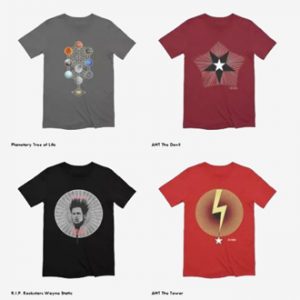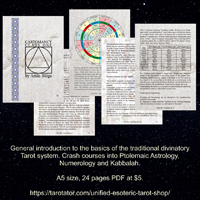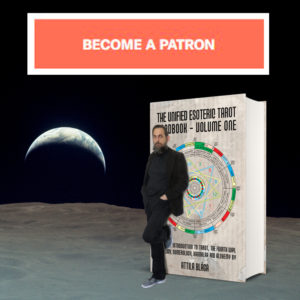The following fragment is the introduction to my upcoming book about dream interpretation and Cartomancy, the guidebook to my Dream Cards. Enjoy!
Introduction to Dream Cards
“Sometimes, the dreams that come true are the dreams you never even knew you had.”
Alice Sebold
Divination and fortune-telling, foreseeing the future, is perhaps one of the oldest concerns of human beings. Therefore, not surprisingly, humans proved to be highly creative in finding and inventing numerous methods of predicting the future.
The purpose of fortune-telling is mainly identical to the practice of divination. Yet, divination is the term used for predictions as part of a religious ritual, often invoking deities and spirits or interpreting various messages, including dreams. Divination explores the things gods have prepared or planned for us. On the other hand, fortune-telling is considered less formal and deals with mundane matters empathising on people’s personal life.
Standard methods of divination and fortune-telling include Aeromancy, Alectromancy, Aleuromancy, Astrology, Astromancy, Augury, Ba-Zi or the Four Pillars of Destiny, Bibliomancy, Cartomancy and Taromancy, Ceromancy, Chiromancy or Palmistry, Chronomancy, Clairvoyance, Cleromancy, cold reading, Crystallomancy, Extispicy, face reading, Feng shui, Gastromancy, Geomancy, Haruspicy, Hydromancy, I Ching, Kau cim, Lithomancy, Molybdomancy, Naeviology, Necromancy, Nephomancy, Numerology, Oneiromancy, Onomancy, pendulum reading, Pyromancy, Rhabdomancy, Runes, Scrying, Spirit board reading, and Tasseography.
While some of these methods, such as Astrology, Numerology, Chiromancy or Cartomancy, may sound familiar to the general public, others, such as Aeromancy, Alectromancy or Haruspicy, are less popular forms of analysis and prediction.
For instance, Aeromancy uses cloud formations, wind currents and cosmological events such as comets to get insight into the past, presence and future. This practice has various subtypes, including Austromancy, Ceraunoscopy, Chaomancy, Meteormancy and Nephomancy. Austromancy interprets the wind’s movements; Ceraunoscopy observes thunder and lightning; Chaomancy deals with aerial visions; Meteormancy studies meteors and shooting stars; Nephomancy follows and reads the clouds.
In this book, I will deal with two branches of fortune-telling, Cartomancy and Oneiromancy, respectively, how these two methods can be used together as complementary ways of decoding symbols, translating messages and finding sense in our wake and slumber life.
Cartomancy is a form of divination and fortune-telling using various decks of cards. Readings can be performed with regular playing cards, Oracles and Tarot cards, working with one or several combinations of decks concomitantly.
Oneiromancy is the esoteric term for analysing and interpreting dreams. Perhaps it is one of the oldest known divinatory systems, originally focused on interpreting prophetic dreams. Written records of dream interpretation exist preserved on a papyrus since 1250 B.C.E.
Both methods analyse and interpret symbolical images, respectively, so-called archetypes. Another shared feature is the focus on the subconscious and unconscious. Bringing to the surface and understanding these buried and hidden memories, desires, emotions, and thoughts are key aspects of both techniques. Furthermore, both systems dive into past and present issues to gain insight into the future.
Of all the practices by which humans seek to penetrate the mysteries of fate and the future, Cartomancy is perhaps one of the most popular since the earliest days of civilisation.
From the beginning of the twentieth century, fortune-telling with cards has become almost the exclusive field of the Tarot. Yet, not too far back in time, Tarot cards were hard to come by, and the ordinary deck of playing cards were the weapon of choice for those who seek insight into the matters of future human matters. Nowadays, hundreds of decks are published monthly, and the difficulty consists of choosing one deck. Various decks of playing cards, Tarot and Oracles are created, exploring diverse cultural themes and providing diversified methods of decoding their content. While traditional Tarot still strongholds its esoteric nature, many modern creations have chosen a more commercial approach. Themes vary from astrological, alchemical, kabbalistic, or numerological to fantasy and fairly-tale, angel or famous movie or cartoons inspired products. Besides the classic astrological correlation of the cards, psychological and psychoanalytical aspects are considered. According to the new paradigm shift, broadening our horizons might be critical in extending our consciousness.
P. D. Ouspensky, in his work exploring the Tarot, noted that “there are many methods of developing the sense of symbols’ in those who are striving to understand the hidden force of Nature and Man, and for teaching the fundamental principles. The most synthetic, and one of the most interesting of these, is the Tarot.”
Some of the first esoteric books I read were Sigmund Freud’s Interpretation of the Dreams and Hajo Banzhaf’s The Tarot. I dedicated three decades to studying the Tarot, and other branches of esoteric and conventional sciences as many of them are tightly interconnected.
The Tarot is a structured system of archetypal images. Therefore, the seventy-eight cards deck I designed is a Tarot based deck, yet, it is not a traditional Tarot deck. While there are cards that imagery and content-wise may correspond to the Tarot, the Kárpáthy Dream cards were not built to match the Tarot cards identically. Still, the deck was built on a similar structure and esoteric architecture, focusing on the fundamentally triplicate nature of the Tarot deck.
One of the reasons that the Tarot deck consist of seventy-eight cards is that seventy-eight can be divided by three. There are three so-called Qualities in Astrology; the Kabbalistic Tree of Life has three pillars; Alchemy deals with the Tree Primes, and so on. We will deal with triplicities in detail in one of the following chapters.
Initially, I intended to create a Tarot related alphabet flashcard deck. The English alphabet consists of twenty-six letters, resulting in three words of the same letter to complete the seventy-eight cards. As I started to look for representative words, inevitable, my attention turned to the archetypal images. It was only a small step from archetypes to immerse into the vivid universe of the dreams and its symbolic imagery. Thus, the original concept of flashcards slowly faded out, leaving more room for dream analysis and interpretation.
The design of the cards also evolved accordingly. The original concept featured large, transparent letters and captions with the card’s title/keyword. While these design elements facilitated the reading and interpreting process, they simultaneously reduced the very same possibilities. Dropping these auxiliary visual elements and leaving only the stripped-down images opened the door for a broader approach. Even unfeatured, all that information remains active and accessible due to the numbering of the cards. The simplified design gives way to alternative and unbiased interpretations. Furthermore, a regular dream Oracle has become an effective therapeutic instrument.
Incarnated in these cards, the dream symbols merge into the archetypal images. As a result, they represent a link between the invisible and tangible worlds and a bridge between waking and sleeping stages.
On average, a regular human being sleeps for twenty-five to thirty years during its lifetime. Between twenty and twenty-five per cent of our sleep time is dedicated to REM sleep dreaming.
According to Matthew Walker, sleep enriches a diversity of functions, including our ability to learn, memorize and make logical decisions and choices. Benevolently servicing our psychological health, sleep recalibrates our emotional brain circuits, allowing us to navigate next-day social and psychological challenges. In ways our waking brain would never attempt, the sleeping brain fuses together disparate sets of knowledge that foster incredible problem-solving abilities. Pretty often, when I had complicated issues that I could not figure out during the day, kind of ‘miraculously’ I found solutions while asleep.
Dreaming is an essential biological and psychological process. Dreaming provides a unique suite of benefits, including neurochemical bathes that mollifies painful memories and a virtual reality space in which the brain melds past and present knowledge, inspiring creativity. Dreams are nursing our emotional and mental health. Time and dreams heal all wounds. Dreams may inspire ideas that change the world or at least solve personal issues. Dreams include emotions, memories, and thoughts set within the formal narrative structure.
Yet, one of the most challenging issues we confront is that often we forget what we dream. According to the “erasure” theory of the Nobel Laureate Francis Crick and Mitchinson, “we dream in order to forget.”
Freud stated that forgetting our dreams is an active function of repression and, therefore, part of the healing process. However, scientists attributed this prominent failure of recollections to state-dependent amnesia caused by aminergic demodulation of the sleeping brain. The waking level of aminergic modulation falls to fifty per cent in non-rapid eye movement sleep and to nearly zero in rapid eye movement sleep, where mainly dreams occur.
According to J. Allan Hobson, the brain state is set by the mode of information processing. The brain switches modes from external to internal information sources, from a store-and-remember to a don’t-store-and-forget mode, and from linear-logical to a parallel associative mode. These mode switches can occur in small but significant ways in waking, but they become pronounced when the brain enters rapid eye movement sleep.
As a result, some people believe that they never dream, while frequently, most people forget their dreams almost instantly after awakening.
Combining various dream techniques and the possibilities provided by exclusive card reading methods can bring back those lost memories and allow us to explore the dream world effectively.
More fragments from this work and exclusive content at https://www.patreon.com/attilakarpathy
Become a patron, support my work
#dream #psychology #therapy #attilakarpathy

